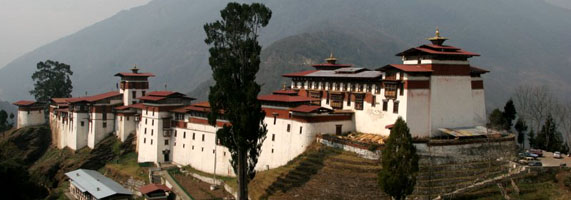Bhutan Tourism Policy: Travel into Bhutan is regulated by the Government in order to minimize the negative effects of tourism upon its fragile environment and culture. All visitors must travel through an authorized Bhutanese agent or its overseas representatives on a prepaid and pre-planned itinerary. The basic policy is that tourists, other than Indian nationals, pay $200 for each night in Bhutan. This covers accommodations, meals, transport, a guide and administrative services to obtain visas, permits, flights, hotel bookings, etc. As such, there are no limitations (quotas) on how many can visit each year, but due to the limited capacity of travel infrastructure, such as hotel rooms and flights to absorb tourists, compounded by high rates, these automatically limit the number of tourists that can visit at the same time.
Visas and Permits: Most countries issue visas from their embassies abroad and stamp your passport but not Bhutan. Bhutanese embassies abroad cannot issue visas for travel to Bhutan. Applications must be in advance through a tour operator with approval received prior to traveling to Bhutan. The actual visa is stamped upon arrival. Two passport-sized photographs are required, along with US$20 in cash.
Getting there: There are only two entry points open to visitors. Most travelers arrive by air at Bhutan's only airport in Paro. The other alternative is to travel through the Indian state of West Bengal and enter at Phuntsholing.
By Air: All tourists are required to travel at least one way by Air. Special requests for exceptions may be possible depending on the season and special conditions. Bhutan's only airport at Paro is about 2 hours drive from the capital, Thimphu. Druk Air, Bhutan national airline, is the only airline flying to and from Bhutan. Normally, there are three flights a week from New Delhi (via Katmandu) and five flights a week from Bangkok (via Calutta or Dhaka)
By Land: The only land entry point for tourists is through Phuentsholing, on the southwestern border with the State of West Bengal, India. With special arrangements, it is possible to exit Bhutan via Samdrup Jongkhar in eastern Bhutan, bordering the State of Assam. The nearest airport to Phuntsholing is Bagdogra, near Darejeeling. And the nearest airport in Assam is at Guwahati, which is about 3-4 hours drive from Samdrup Jongkhar.
Travel within Bhutan: Travel within Bhutan is only by motor vehicles or trekking. There is no domestic air service, including helicopters, and Bhutan does not have a railway system. The only way to see the country is either by foot or by road. Mountainous terrain and winding roads restrict the average speed of vehicles to less than 25 miles -40 km per hour.
The Time to Travel The best time to visit Bhutan is in the Spring and Autumn, when most of the festivals take place and the weather is best. This is the ideal time for trekking and traveling throughout the country. Rain occurs frequently no matter the season. The monsoon season is from June to August, when an average of 0.5m (1.5ft) of rain pours down in Thimphu and up to 1m (3ft) saturates the eastern hills.
Taxes The departure tax from the airport in Paro is Nu. 300 (approx. US$8). Druk Air ticket costs do not include airport taxes. If you are coming from Bangkok, expect to pay Bhat 500 (about $14), from Kathmandu Rs. 500 (about $7), from Delhi or Calutta Rs. 150 (about $4). Hotels and restaurants in Bhutan charge a 10% sales tax and 10% service charge. Although meals and accommodations are covered in the tour cost, taxes are applicable for beverages, such as juice, soda, alcohol etc, and must be paid by the traveler. No other taxes are applicable during your stay.
Currency Bhutan's currency is the Ngultrum (Nu), which is equivalent to an Indian Rupee. Money can be exchanges at Paro International Airport on arrival or at any of the government banks, like Bhutan National Bank and Bank of Bhutan. Money can also be exchanged at most hotels. There are currently no ATM's in Bhutan available for use by tourists, and credit cards are accepted only at selected shops.
Time Zone Bhutan has only one time zone, Bhutan Standard Time (BST). It is six hours ahead of Greenwich Mean Time (GMT), 30 minutes ahead of India
Altitude: The maximum elevation that can be reached on a Bhutanese road is 3140m in the west and 3750m in the east. These are at mountain passes that are crossed to get to the next valley. Most of the towns and villages with accommodations are between 2000 – 2900m. It is rare to have individuals suffer from altitude problems at these elevations.
Accommodations There are varieties of hotels in Bhutan, but generally speaking, tourists are accommodated in tourist standard hotels, which are approved by the Department of Tourism. Although there are some differences between them in property, prices and services, most of these hotels are not significantly different from one another. Some luxury resorts have recently opened, and others are being built.



